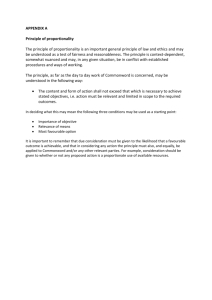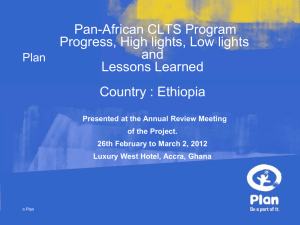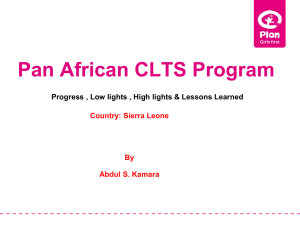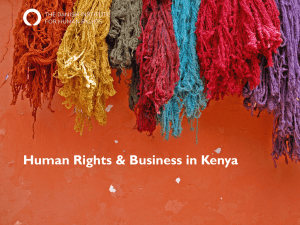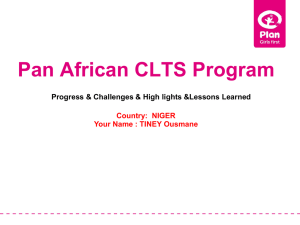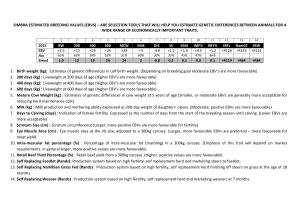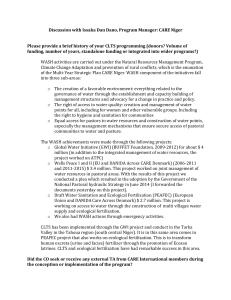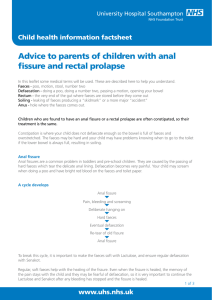Favourable and unfavourable conditions - Community
advertisement
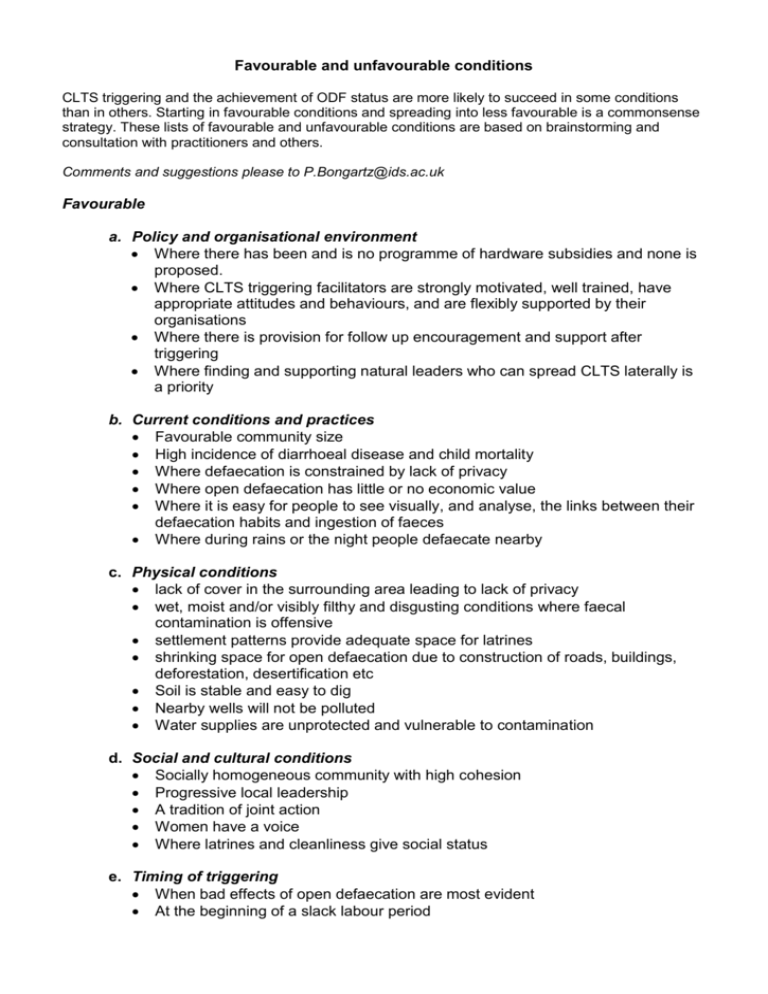
Favourable and unfavourable conditions CLTS triggering and the achievement of ODF status are more likely to succeed in some conditions than in others. Starting in favourable conditions and spreading into less favourable is a commonsense strategy. These lists of favourable and unfavourable conditions are based on brainstorming and consultation with practitioners and others. Comments and suggestions please to P.Bongartz@ids.ac.uk Favourable a. Policy and organisational environment Where there has been and is no programme of hardware subsidies and none is proposed. Where CLTS triggering facilitators are strongly motivated, well trained, have appropriate attitudes and behaviours, and are flexibly supported by their organisations Where there is provision for follow up encouragement and support after triggering Where finding and supporting natural leaders who can spread CLTS laterally is a priority b. Current conditions and practices Favourable community size High incidence of diarrhoeal disease and child mortality Where defaecation is constrained by lack of privacy Where open defaecation has little or no economic value Where it is easy for people to see visually, and analyse, the links between their defaecation habits and ingestion of faeces Where during rains or the night people defaecate nearby c. Physical conditions lack of cover in the surrounding area leading to lack of privacy wet, moist and/or visibly filthy and disgusting conditions where faecal contamination is offensive settlement patterns provide adequate space for latrines shrinking space for open defaecation due to construction of roads, buildings, deforestation, desertification etc Soil is stable and easy to dig Nearby wells will not be polluted Water supplies are unprotected and vulnerable to contamination d. Social and cultural conditions Socially homogeneous community with high cohesion Progressive local leadership A tradition of joint action Women have a voice Where latrines and cleanliness give social status e. Timing of triggering When bad effects of open defaecation are most evident At the beginning of a slack labour period Unfavourable a. Policy and organisational environment Hardware subsidies. Where there has been a recent or is a current programme for hardware subsidies, or one is thought or known to be proposed Organisations with big budgets for subsidies, and targets and reporting based on latrines constructed Opposition from the staff of such organisations CLTS triggering organisations and staff with top-down teaching cultures and practices Lack of staff and resources for follow up, encouragement and support after triggering b. Current conditions and practices Existing use of nearby water that carries faeces away (stream, river or the sea) Economic use of faeces for fish farming or agriculture Private, accessible and convenient places to go (e.g. latrines with running water) Plenty of cover of bushes, trees and/or topography in surrounding area c. Physical conditions Hard rock in which it is difficult to dig Highly collapsible soil Dense settlement where it is difficult to find space, and storage may fill up Dangers of polluting nearby wells d. Social conditions People are very healthy with little diarrhoea Socially divided community with low cohesion Weak tradition of joint action Women have little voice and/or few resources Concepts of modesty and taboos which act as deterrents History of and stories about latrine collapse or failure or danger (eg of children falling in) Likely resistance from influential people e. Timing of triggering during peak labour demand when faeces are less filthy and disgusting, eg during hot dry or very cold/freezing weather periods Depending on context, either favourable or unfavourable nucleated dense settlement cultural and religious values and beliefs
